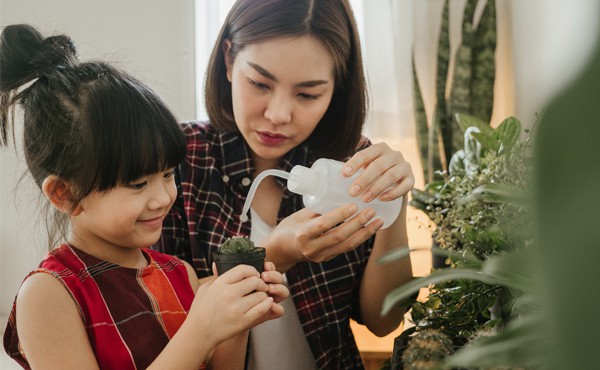Indoor Gardening Ideas For Schools
Learning is never quite as fun as when it involves playing in the dirt. There's a good reason for that: experts say nature holds important health benefits for kids, including boosting physical, emotional, and mental health. That's one reason why gardening is such an engaging activity for little hands.
The good news is that you don't need a lot of outside space for these garden-based home science experiments. These seven science activities are perfect for preschoolers and can all be done indoors, meaning you and your kids can grow a garden in your home no matter what the weather's like outside.
 1. Learn about seeds with an egg carton seed starter
1. Learn about seeds with an egg carton seed starter
This fun science craft lets you reuse an old egg carton as a seed planter, and it lets your kids engage their artistic side while they learn about concepts like experimentation and germination.
If you plant different types of seeds in the cups, have your child draw or write each plant's name on the lid of the carton. This way they can keep track of what's planted where. Or, they can search magazines or catalogs and cut out pictures of the plants and paste them to the carton's lid.
Water the planters and place your carton in the sun. Check in daily to water the carton and see when your sprouts appear!
Here are some more ways to let your little scientist explore:
- If you have several cartons, place them so each one gets different amounts of sunlight each day and see how that affects their growth.
- If you planted the same type of seed in each cup, remove one after several days of watering and see if it has grown roots or sprouts.
- Every few days, remove another seed and track the germination progress. How do they change over time?
2. Re-use kitchen scraps in a jar
This is the ultimate indoor vegetable garden—a fun science craft for kids that also solves the problem of what to do with your kitchen scraps. Many vegetables from the grocery store can be regrown in a jar of water. Carrots, sweet potatoes, pineapples, celery, onions, and more will all regenerate, letting your little one watch root systems grow and stalks sprout.
3. Use food coloring and celery to see how roots absorb water
This easy nature craft lets kids see how plants move water through their bodies. Take a stalk of celery and put it in a jar or vase of water. Add some food coloring and then note how the color of the celery stalk changes over time. As part of your experiment, help your child track how quickly the plant absorbs water. How do changes in temperature or light affect it?
4. Make your own ecosystem with a terrarium
A terrarium is a lot like an aquarium, only for plants and air instead of fish and water. NASA's Climate Kids page has some great instructions. You can use anything from a large jar to a goldfish bowl or aquarium. Fill it with gravel, potting soil, and plants. This will be a good way to see how earth's ecosystem depends on many different factors, like light, temperature, and water, for a healthy environment. What kind of factors affect earth's environment?
5. Learn about native plants and help regrow them with seed balls
Not all gardening needs a shovel or a well-prepared plot of ground. Kids can plant flowers just by tossing seed balls around.
A seed ball is a mixture of clay, earth, and seeds rolled up into a ball about the size of a marble. Your child can craft these in the house and toss them out onto bare spots in the yard, alleyways, or vacant lots next time they're out.
The clay and earth protect the seeds from the elements, giving them enough time to take root and sprout. Conservation advocates recommend making seed balls for plants native to your area. This helps restore the natural balance of your local ecosystem, but you can use almost any seed.
You can find detailed instructions here.
6. Make grass "hair"
This fun little project lets kids plant "hair" for their own self-portraits. Print out photos of your child, or have them draw their own picture. Tape those to a small pot or cup, and plant grass or another type of plant seed. Once sprouted, youngsters can enjoy "styling" their grassy hair with scissors.
7. Help a pollinator by making a butterfly feeder
Your little ones can help butterflies by making their own butterfly feeder. With a paper plate, some string, and a mushy old banana, you'll have a butterfly feeder to hang outside your window. Find detailed directions here. Hang your feeder outside, near some flowers, and wait for your colorful visitors.
Have your junior naturalist note the butterflies they see, and then look up what kind they are based on your child's observations.
For some fun science experiments, see what happens if your feeders are different colors or hung in different parts of the yard.
Indoor Gardening Ideas For Schools
Source: https://www.waterford.org/resources/indoor-gardening-activities-for-kids/
Posted by: morrisonthaven.blogspot.com

0 Response to "Indoor Gardening Ideas For Schools"
Post a Comment